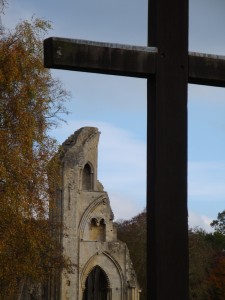Here is a belated update on the fantastic ‘Encountering the Sacred in Museums’ Study Day held in the British Museums on Friday 15th March 2013. You can get the whole programme from the Religion in Museums blog
I was inspired by Karen Armstrong’s point in the first session that we need to learn the ‘science of compassion’. In the Q&A session she noted that instead of worrying what we say to or about religious communities, we really need to think about listening and engaging in a conversation with people of faith. She, and other speakers, also stressed that the sacred doesn’t have to be about religion: everybody has something which is sacred to them, something without which life would be lessened, something which they would die for.
The following session looked at London’s Jewish Museum and various Islamic art collections. Both speakers noted that religion was not the only factor in interpreting these collections: local and regional differences might come into play, and personal and dometic stories could bring these objects to life. The stories they told with specific objects brought them back to a human, domestic level which connected them to the experiences of people of faith or no faith.
The session in the afternoon looked at some British Museum exhibitions in detail. Steph Berns gave a brilliant insight into the sacred interactions which took place between people and objects in the ‘Treasures of Heaven’ exhibition. The stories of people quietly praying next to objects reminded me of my research at Glastonbury Abbey where people are often seen sitting in silent prayer or meditation. The day ended with a look at the Creationism Museum and the Witchcraft Museum, both run by members of communities of faith, albeit with drastically different missions and outlooks.
I’m not doing the day justice here and I’m hoping that the organisers will be able to put up some version of the talks online. There are lots of people working on this topic but they are often in quite disparate disciplines. ‘Encountering the Sacred in Museums’ was such a success because it brought different methodologies, collections and theoretical perspectives together in one place.


